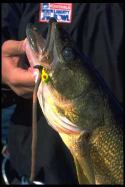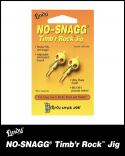Fishing Facts Magazine, April, 2001
Fishing Heavy Cover – “The Best of Times?”
By Ted Takasaki,Greg Bohn and Scott Richardson
Eighteenth-century author, Charles Dickens, would have appreciated the way fishermen view wood, rock and weeds today. Dickens began his classic, “A Tale of Two Cities,” with the words, “It was the best of times, it was the worst of times.” Fishing “cover” is that way for us anglers.
Cover is the “best of times” because all types of fish gravitate to it. Weeds give off life-giving oxygen. Decaying wood attracts tiny zooplankton which draws minnows. Gamefish are not far behind. Rocks and wood absorb heat from the sun in spring and late fall, raising water temperature and igniting the food chain which boosts activity levels of fish.
For the hunters, cover provides ambush points to wait for passing prey. For the hunted, it offers a safe haven from predators. This is critical in a watery world where who lives and who dies is a matter of survival of the fittest.
Weather is a factor while understanding the importance of cover. Fish, like largemouth bass, will often dart to the safety of a thick weedbed in storms. Walleye anglers know to check timber after a cold front because walleyes will tuck in close and stay.
Obviously, good reasons lie behind the adage, “If you aren’t getting snagged, you aren’t fishing where the fish live.”
But, cover can also be the “worst of times.” This is known anyone who has tried to cast a jig into the thickest part of beaver cuttings or who has drifted over a flat strewn with fallen logs or boulders. Frustration levels soar from break-off after break-off. You can’t catch fish while tying. The easy way out is for anglers to stay away from snaggy, fish holding cover. And, that’s a big mistake.
Fishing Hall of Famer, Ron Lindner, and Wisconsin fishing guide, Greg Bohn, weren’t immune to the headaches that snags cause. Independently, they worked for years to find a remedy. When combined, the tackle innovations they have developed will revolutionize the way we think about fishing in dense cover and take the fear out of fishing in heavy cover for everyone but the fish.
For Bohn, the worst of times came on the Turtle-Flambeau Flowage in upper Wisconsin near Minocqua, Wis., and his Strictly Walleye tackle store. Portions of the flowage are minefields of stumps, wood-covered flats and downed trees, which attract walleyes from ice out to ice up. Other parts of the flowage lack wood, but in those spots, any timber that does exist holds fish. Bohn has taken 100 walleyes at mid-day off a single isolated tree felled by a marauding tornado. “What a walleye factory that is, but you could go out with three dozen jigs and come back with none,” said Bohn in true Dickens’ fashion.
The wood has created two main problems for the guide. First, clients would cast a jig into heavy cover and get snagged at the first stop from the launch. The commotion they caused trying to yank the jig loose spooked fish even before Bohn had a chance to drop anchor. The second problem is that break-offs were inevitable which translates into less fishing time and fewer fish for clients.
It wasn’t long before Bohn began experimenting with wire hook guards. Some he devised were too stiff. True, they were snag-proof. But, they also were fish-proof. Trial and error eventually led to a patented 7-strand wire protector that became the primary feature of the Timb’r Rock Jig, which Lindy Little Joe, Inc., is introducing to the market right now. Not only does it prevent snags, it’s insect-like appearance provokes vicious strikes when dressed with a minnow, leech or piece of nightcrawler.
Recently, the 7-strand wire snag guard has also been adapted for use on a snell to team up with the NO-SNAGG slip sinker, which Lindner designed and which Lindy began offering last year. Lindner had promised a snagless sinker to Lindy’s first president Nick Adams more than 30 years ago when the company introduced its first Lindy rig. The original Lindy walking sinker was good on clean bottoms, but it got hung up too often in rocks.
The NO-SNAGG sinker has now solved much of that problem. But, fishermen reported that they were still getting snagged on conventional snelled hooks. So. the NO-SNAGG sinker has been combined with Greg’s 7-strand technology in order to create a new NO-SNAGG Rig. It is essentially a Lindy rig for use in heavy cover. The snell is 5-feet long, has a sharp red hook and a chartreuse bead to add color and protect the knot.
On a trip to Rainy Lake, Bohn and Linder tried to do everything they could to snag up. Though northern pikes cut off a few, they did not loose one rig to a snag in three days even though they concentrated on wood, rocks and boulders. For the first time, fishermen will now have the tools to attack the thickest cover and catch fish where they live.
For jigging, Bohn starts with a 7-foot, 2-inch Leech Stick spinning rod he makes himself. He spools up with 8-pound test to combat line abrasion.
Where cover is sparse, Bohn fishes each fallen tree or stump or weed bed, either casting into holes or pathways he can see or slowly dragging the jig along the edges. Where cover is plentiful, Bohn concentrates on the cover closest to the channels. He focuses on the windy side of the lake. He has seen times when he could see walleyes holding amid wood on the bottom, but they would not strike until ripples appeared on the surface.
The best trees are ones that are elevated slightly off the bottom in 8 to 12 feet of water. But, he has seen times when he catches walleyes along the trunks of trees right next to the shoreline. He will often pluck fish after fish vertical jigging from a stump field on the river channel at 25 feet or a brush pile collected on a bend in the channel at 30.
Hung up? Don’t tug on the hook. Merely give the line slack and shake it free. The hood guard can be bent forward for light biters or in sparse cover and closer to the hook point for dense situations. Cast into pockets inside the weeds or along edges.
Like the Lindy rig, turn to the NO-SNAGG Rig in order to cover more area by drifting or trolling with a trolling motor when fish are more scattered. Fish the edges of weeds, brush piles, stump fields or cane beds. Use enough weight to keep the line at a 45-degree angle to the water’s surface depending on the depth being fished and wind conditions. Chances of hang-ups and missing strikes increase if too much line is let out.
Lindner and Bohn use spinning gear for smaller weights and bait-casting equipment for heavier ones of three-quarters of an ounce or more. Lindner suggests using a super line to the snell. If you do get snagged, you can break the snell off yet save the sinker. Tie on another snell and you are soon back in the water.
Pump the sinker slowly up a foot and down and merely tap the bottom to insure you remain in the strike zone. Use the one-eighth size in weeds to avoid fouling the sinker with debris. Leave the bail open or the spool free. When you feel a fish take the bait, let it have it to a count of five or so before setting the hook.
No technology can prevent all snags. But, new NO-SNAGG approaches go far to make the time you spend fishing dense cover “the best of times.”

 Not only did legendary Wisconsin fishing guide Greg Bohn design the snag-free new Timb’r Rock Jig, he designed the NO-SNAGG Hook, which sports the same 7-strand wire hook guard. The hook marketed by Lindy Little Joe becomes a potent weapon when combined with the NO-Snagg Sinker, designed by Fishing Hall of Fame member Ron Linder.
Not only did legendary Wisconsin fishing guide Greg Bohn design the snag-free new Timb’r Rock Jig, he designed the NO-SNAGG Hook, which sports the same 7-strand wire hook guard. The hook marketed by Lindy Little Joe becomes a potent weapon when combined with the NO-Snagg Sinker, designed by Fishing Hall of Fame member Ron Linder. Lindy’s New Timb’r Rock Jig Allows Snag-Free Fishing in Rocks, Timber and Brush
Lindy’s New Timb’r Rock Jig Allows Snag-Free Fishing in Rocks, Timber and Brush